We have learnt through experience that going to India and immediately commencing the NID is too exhausting, at least it is at our age. So we planned to drive to Heathrow on Tuesday evening, arrive in Delhi on Wednesday morning and then rest and do not a lot until Friday when we have the briefing meeting, meet the rest of our team and set off on the long drive to Ludhiana.
All of this worked as planned apart from driving to Heathrow around the infamous M25. For weeks I have been worrying about it being blocked when we needed to go to the airport and when I checked the road traffic information website about lunchtime on Tuesday - it was blocked, not only by an accident and long traffic jam near the airport but also by another one on the opposite side of the M25. So we could not drive to the airport in either direction around the M25. So it was Plan B which was to forget driving there and instead go by taxi / train / tube. There also was a Plan C (take the Paddington Express) if the tube was blocked.
Plan B got us to the airport in ample time for our JetAirways flight to Delhi which left on time, arrived on time, was reasonably comfortable in economy.

For the first time we have used the new e-Visa system for India which involves applying for a visa online and receiving an email saying you have a visa awaiting you in Delhi. The system has it problems, in particular paying for the visa online but we got it to work without too much trouble. The difficulty came in India when our fingerprints were taken and it must have taken the somewhat exasperated immigration officer about 10 tries to get the machine to take a satisfactory set of fingerprints (unlike that used in America which seems to always work first time).
The drive from the airport to our hotel showed us that not a lot has changed in the past year. The Delhi Metro system is still under construction, drivers still try to fit 6 lanes of traffic into a 4 lane road (the white lines are only there for decoration, they have no purpose)

Our base in Delhi is the Royal Plaza Hotel - a hotel which advertises itself as five star but really is about three star. The lobby is not really representative of the rest of the hotel.
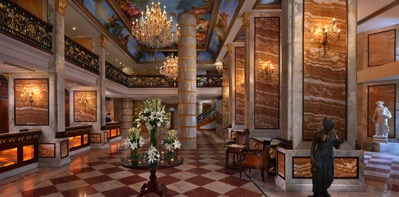
The last time we stayed here we wrote a critical TripAdvisor report. The response from the hotel invited us to let them know if ever we stayed there again and they would try to do better. We did so and were upgraded to the Royal Suite.
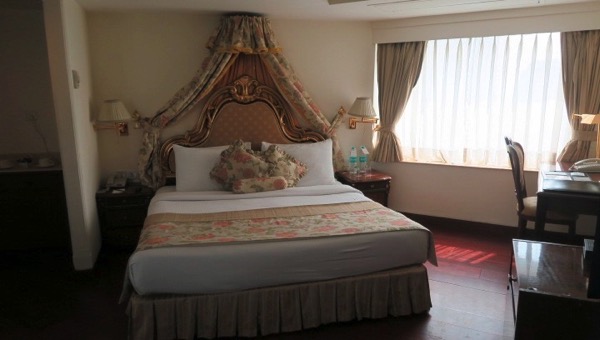
To be fair to the hotel, this is a much nicer room than the normal basic room with a lot more space, a sitting area and complimentary fruit, very fast luggage delivery and a few other things. If one wanted to nit pick there still was only one teaspoon, one dressing gown and one pair of bedroom slippers in a room designed for two but two nights in this room was much nicer than two nights in a basic room.
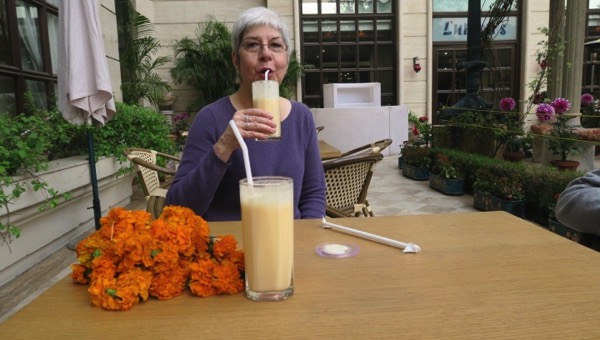
And it was not too long before Pat was enjoying a rather good Mango Lassi - something she had yearned for ever since we were here last year. The Marigolds are the traditional garland Rotarians get presented with when they arrive, the one problem is that they often harbour biting insects and hence having accepted them as a gesture of welcome, those in the know take them off and carefully place them near by.
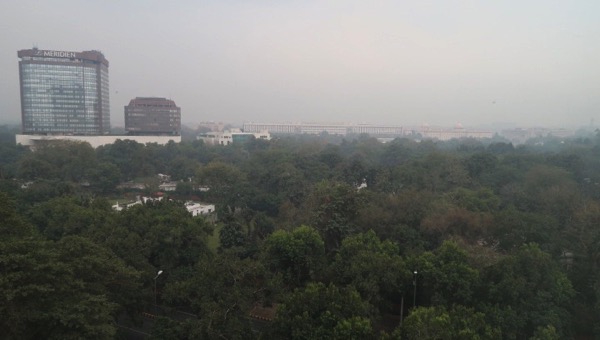
Delhi suffers from severe smog and this was obvious when we got up on Thursday morning. The smog only goes when there is a strong wind blowing, something which is unusual here. Hence the airport also suffers from fog at this time of the year and it is not unknown for flights to be severely delayed.
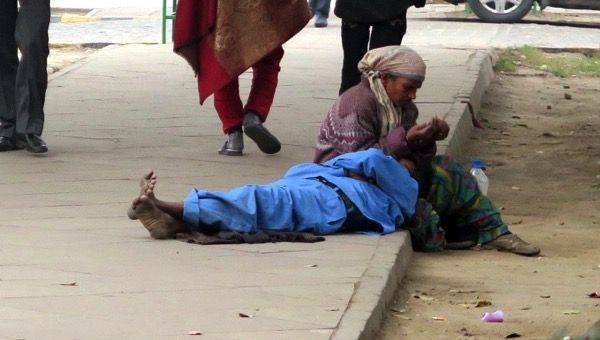
People living and sleeping in the streets is so common that not to see them would be thought of as unusual.
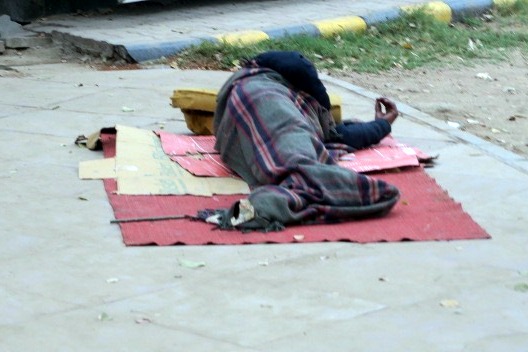
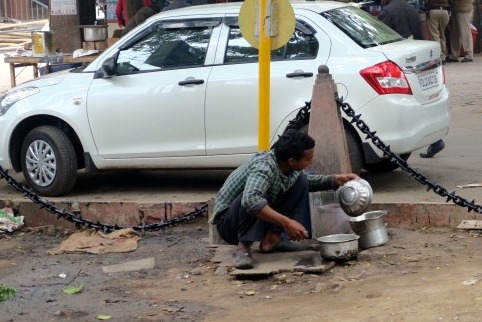



Taking a tuk-tuk ride however was still just as exciting as it has always been and how the driver avoids the numerous imminent and certain collisions with other vehicles is something we still have trouble understanding. If you have never ridden in a tuk-tuk, you have never experienced dodgems with real vehicles on real roads !
The status of Women in India
This sign in the back window of a Taxi in Delhi - “This Taxi Respects Women” is a useful way of revisiting the status of women in India.

One of the press headlines whilst we were here noted the fact that in a village not too far from where the Indian Prime Minister came from, unmarried women had been banned from having a mobile phone. We read about it in the Hindustan Times here and here is the link to a similar article in The Daily Telegraph.
Jantar Mantar

Near to the hotel was one of a number of astronomical observatory sites built in India in the 1700s. Its main role was to compile astronomical tables and to predict the movements of the sun, moon and planets.

An overall picture of the site shows the enormous size of the various astronomical instruments all built from stone.
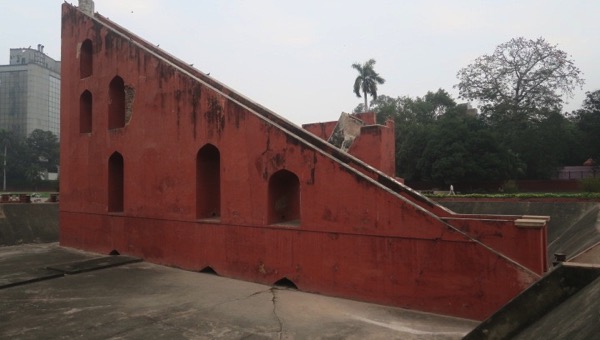
This is the Samrat Yantra (Supreme Instrument) which is a large sundial. The Hypotenuse (the long sloping side) points towards the North Pole.

On each side of the Gnomon are additional constructions (Quadrants) graduated in hours, minutes and seconds.
The Ram Yantra comprises two large buildings which between them

enabled the measurement of the altitude of the sun
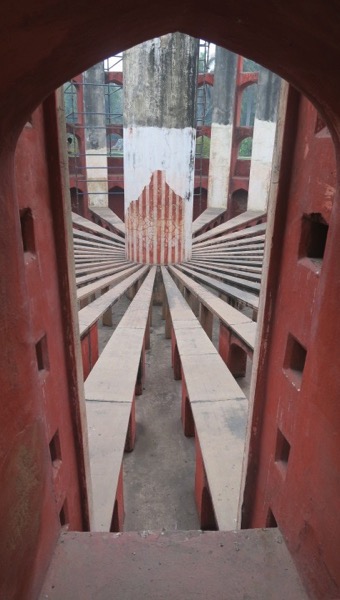
by the height of the shadow cast on the inside wall of the building by the Gnomon in the centre of this photograph.

The Misra Yantra is five instruments in one. It determines the shorter and longest days of the year, the exact moment of noon in other cities; it contains a regular sundial; it determines the altitude of the sun at noon; the zodiac sign of the day; and the angle of the Sun at noon on the equinoxes and solstices.
Although the instruments and their use is badly explained within the park, knowing that they date from the 1700s and enabled astronomers of that time to accurately measure many astronomical values is in itself extraordinary.
As an aside, as foreigners it cost us 100 rupees to enter the park (the entrance fee is 5 rupees for Indians). The ticket office charged us 100 rupees each but gave us 5 rupee tickets which were accepted at the entrance without comment. What happens to the other 95 rupees I wonder? This time in India, we noticed a far greater desire to either fiddle the system using us as the means or to try to charge us far more than the regular price - an attempt to convince us that a Tuk-Tuk ride costs 600 rupees comes to mind. A pity.
No comments:
Post a Comment